I had some fun with an RTL-SDR dongle, and I noticed this weird signal with no noticeable pattern at 119.9 MHz. What's even weirder is that the signal is symmetrical. What might this be? Or is this simply a hardware error?

EDIT: This picture is from an oscillating signal generator/MP3 tansmitter from AliExpress (2SC9018) and it looks pretty similar: 
The only problem is, that when listening to the signal (In FM, AM, etc.) you cannot hear any music, any speech or any patterns that would sound digital.